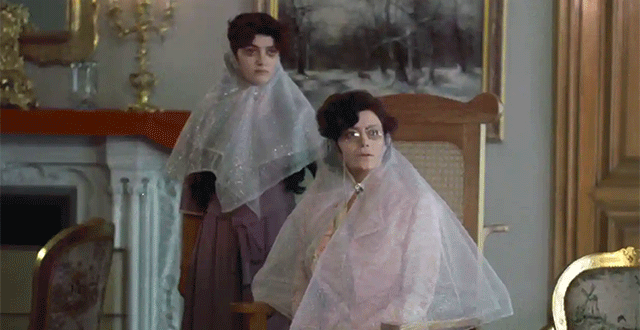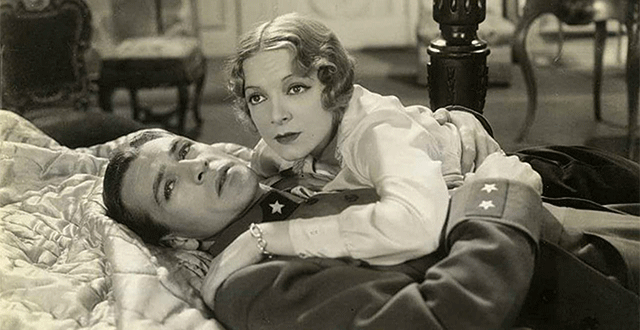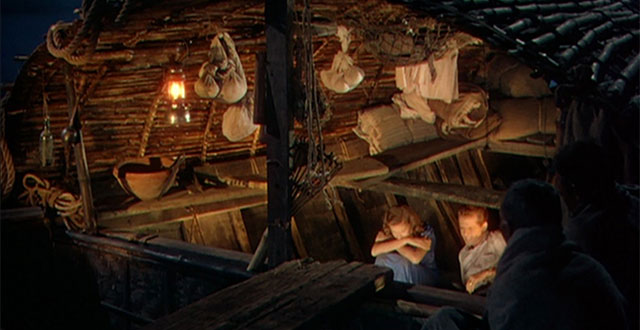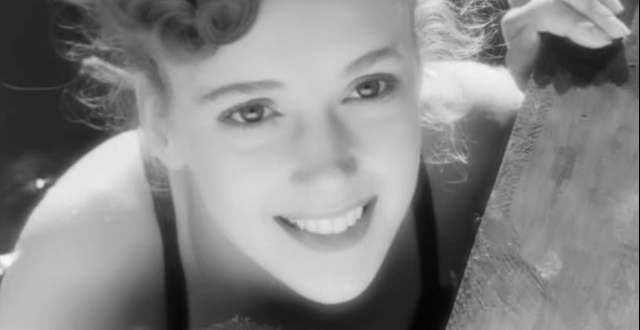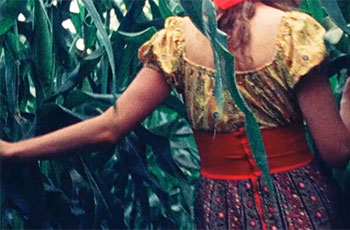News
'Audiences won’t have seen anything like this': how Iranian film Chess of the Wind was reborn
John Harris Dunning
Mohammad Reza Aslani’s gothic family thriller was banned in Iran and presumed lost, only to be found years later by his children in a junk shop. Now, painstakingly restored, it’s showing at the BFI London film festival
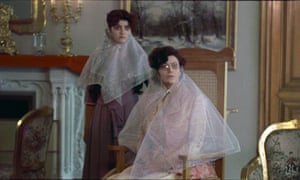
Erotic tension ... Shohreh Aghdashloo and Fakhri Khorvash in Chess of the Wind
The rediscovery of a film is seldom as fascinating a story as the film itself, but that’s the case with Chess of the Wind (Shatranj-e Baad), directed by Iranian film-maker Mohammad Reza Aslani. It was only screened twice in Tehran in 1976, once to a cinema of hostile critics, and then to an empty cinema – the bad reviews had done their work. “The rediscovery of this film is great for me,” says Aslani, now aged 76, and still living in Tehran. “But it also allows audiences to view Iranian cinema from another perspective, and to discover other auteur film-makers who have been marginalised because of the complexity of their films.”
Critical of the Shah’s royalist government, the film also featured strong female leads and homosexuality, which didn’t endear it to the Ayatollah Khomeini’s regime either. In the politically tumultuous years that followed the Iranian revolution of 1979, the film was banned, and then presumed lost. “Critics in Iran at the time of its release claimed the film didn’t make sense, that my father was just trying to make an intellectual film, to imitate European cinema,” says the director’s daughter, Gita Aslani Shahrestani. But Aslani Shahrestani was determined not to let her father’s legacy languish. A writer and academic based in Paris, she was uniquely suited to the task. “About seven years ago I was working on my PhD about auteur cinema in Iran, and this film was part of it, so I started to look for the film.”
Having searched the international film archives without finding a copy, Aslani Shahrestani turned to her brother Amin – based in Tehran – to help in her investigation. Nothing could be found in the Iranian laboratories and archives either. It seemed that Chess of the Wind was lost for good. Then, browsing in a junk shop in 2014, Amin spotted a pile of film cans. On enquiring what they contained, the proprietor said he didn’t know; they were simply on sale as a decorative element. Like something out of a fairy tale, on opening them Amin discovered a complete copy of his father’s long-lost film. Still banned in Iran, the print was smuggled out of the country via a private delivery service to Paris, where work began on restoring the film, overseen by Martin Scorsese’s non-profit organisation, The Film Foundation’s World Cinema Project, in association with the Cineteca di Bologna.
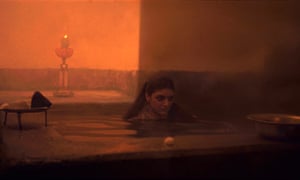
Gothic horror ... Chess of the Wind
Chess of the Wind is a gothic family tale, following the (mis)fortunes of a paraplegic heiress played by Fakhri Khorvash, her angular face a study in controlled despair. Seeking to maintain her fragile independence, she’s beset on all sides by predatory men – her stepfather, his nephews, the local commissar – who all seek to prise her fortune from her. She’s aided against them by her handmaiden, played by Shohreh Aghdashloo (nominated for an Oscar for her role in House of Sand and Fog). An erotic tension between mistress and maid adds spice – and complexity – to the proceedings.
The opulent, claustrophobic interiors are reminiscent of Persian miniatures. There’s also something of the gothic horror of Edgar Allan Poe. The influence of European cinematic masters like Pier Paolo Pasolini, Luchino Visconti and Robert Bresson is also apparent; the camera lingers on hands as they roll cigarettes, serve food, and feed gunpowder down the barrel of a gun, finding beauty in these simple actions. The sound design also stands out: wolves howl and dogs bay as they circle the house, ratcheting up the sense of menace; crows caw, jangling the nerves; heavy breathing makes the characters’ isolation in this haunted house increasingly oppressive. The soundtrack – an early work by trailblazing female composer Sheyda Gharachedaghi – takes inspiration from traditional Iranian music, and sounds like demented jazz.
Initial reactions to the restored film have been rapturous, to the delight of its director. “I was not expecting such a positive reaction,” says Aslani. “Of course, I’m very happy this film is finally being viewed fairly, and not through a lens that values populist cinema and propaganda.”
Robin Baker, head curator of the BFI National Archive, who programmed the film in this year’s BFI London film festival, says, “I think this film will have an impact on the world film canon – its ambition on so many different levels is extraordinary. It has a resonance far beyond an Iranian cinema niche. I found it genuinely shocking at times. I think it will confound so many people’s expectations not only of the cinema, but also of the culture of Iran. I can confidently say that audiences won’t have seen anything quite like this, no matter what their taste in cinema.”
Sadly, Aslani’s film-making career was a casualty of Iran’s political upheavals. Before Chess of the Wind, which he directed aged 33, Aslani had made two short films: a documentary (Hassanlou Cup, 1964), and a wry political allegory critical of the Shah’s government (The Quail, 1969). He’d also directed the first season of a television series (Samak Ayyar, 1974) that was roundly criticised for its idiosyncratic, uncommercial style. Afterwards, he remained in Iran, continuing to work within the Iranian film industry. He’s since made more than 10 documentaries, an experimental piece (Tehran, A Conceptual Art in 2011) and another feature film, The Green Fire (2008), but his output has been severely curtailed – both practically and conceptually – by his situation. Yet he still has plans.
“I hope to make another feature,” says Aslani. “I’ve had a script for 10 years, but because I’ve been labelled uncommercial and unentertaining in Iran, nobody wants to risk producing it. It’s a historical film about one of the greatest Iranian poets, and the style of the film again recalls Persian miniatures, western painting and the cinema of Visconti and Bresson.”
Meanwhile, Chess of the Wind is a reminder of his talent, and acts as a touching tribute by Gita Aslani Shahrestani to her father’s legacy. “When he saw the restoration he said it was like seeing a therapist, that it reminded him why he’d wanted to be a film-maker in the first place,” says Aslani Shahrestani. “He was really happy. He regrets nothing. He said the film was like a baby he’d lost, and now they’re reunited.”
• Chess of the Wind is available for free on the BFI Player from 10–13 October as part of the London film festival.
Out of the Vaults: “A Farewell to Arms”, 1932
Meher Tatna
There is an apocryphal story about Ernest Hemingway telling Howard Hawks his opinion of Hollywood money. “Walk to the Nevada side of the California state line and have them throw the money to you. Walk away. Do not enter California,” he is said to have told Hawks.
It’s probably what he did when he sold his novel A Farewell to Arms to Paramount Pictures in 1930, taking $80,000 ($1.25 million in today’s money), and then loudly complaining about the finished picture (he sold Hollywood several more rights subsequently.) But even though this was the first filmed adaptation of Hemingway’s books, he did have a reason to complain. The Frank Borzage-directed movie shifted the focus of the WWI-set movie from the war to the romance between the lead actors. And what was even worse, he shot two different endings: a sad one faithful to the book, and a happy one where the heroine doesn’t die, and then the studio compounded the insult by letting exhibitors choose which version to screen. But Hemingway did get something out of the experience. He made a life-long friend of star Gary Cooper, and while they vacationed and drank together, apparently the subject of the movie was never raised between them.
Cooper plays Lt. Fredrick Henry, an ambulance corpsman in Italy during WWI who falls in love with a British nurse, Catherine Barkley, played by Helen Hayes. His jealous friend Major Rinaldi (a mustachioed Adolphe Menjou complete with an Italian accent) conspires against them by having Catherine transferred to Milan, but when Frederick is wounded and ends up in the same Milan hospital, the lovers are reunited and Catherine gets pregnant. Frederick, unknowing, goes back to the war; Catherine goes to Switzerland to have her baby. Rinaldi intercepts their letters. When Frederick eventually learns of Catherine’s pregnancy and whereabouts, he deserts the army to go look for her. Their reunion is tragic or happy, depending on the version seen.
Hayes was the bigger star and receives top billing in the film. Fredric March was originally supposed to take on the lead but dropped out when his choice of director, John Cromwell, was replaced by Borzage, and the role was offered to Cooper. Other cast members include Mary Phillips who plays Catherine’s friend, Jack La Rue is the priest who marries them in a ceremony of sorts, and Blanche Fridici is a Nurse Ratched-like character who thwarts the lovers at every turn.
The film cost about $800,000 to make in the pre-Code era of Hollywood. But there were problematic scenes that the Motion Picture Producers and Distributors of America (today’s MPAA which censored movies back then) were unhappy with, such as the seduction scene in which Catherine gets pregnant as an unwed woman, the “marriage” scene performed by a Catholic priest, Frederick’s desertion from the army, and the labor scene with Catherine hemorrhaging. The popularity of Hemingway’s book was one reason the story wasn’t altered further as audiences wouldn’t stand for it, but the MPPDA forced some changes, such as references to labor pains, toning down the birth scene, and hiding Catherine’s pregnancy bump behind props. The Hayes Code would not be enforced for another two years, which explains why scenes like soldiers visiting brothels were left in. Hemingway’s contempt for the Italian army in the novel never even made it into the script from the get-go. A subsequent 1938 release of the movie had even more cuts.
From today’s perspective, the film is dated and melodramatic, especially Catherine’s death scene where she lies, fully made-up in bed, gasping out that she’s not afraid of death before expiring dramatically in Frederick’s arms. Frederick then sweeps her up, the folds of her gown gracefully trailing behind him take her to the window, and intones “peace, peace” to some unseen listener. But there are many things to admire about it, aside from Cooper’s dashing looks. Oscar-winning cinematographer Charles Lang did wonders with limited technology in the battle sequences which are shown in a montage with dramatic music. And one scene in which the gurney-bound Frederick is taken through the hospital shows the scene from his point of view, sweeping the beautiful ceilings of the old building in Milan, an angle not much used in films up to then.
The original film released in 1932 ran 89 minutes. Farewell was nominated for the Oscar for Best Picture and Best Art Direction and won for Cinematography and Sound.
Farewell was rereleased in 1938 with further cuts, down to 78 minutes, and remade twice in the 1950s. The 1932 original disappeared from screens. It reemerged on television in the 1980s with 10 missing minutes from the original. The studio in the title credits was now Warner Bros. who had taken over some Paramount assets by then (that’s the version on Amazon Prime right now; that version is also missing the seduction scene). It is now in the public domain with various versions online at various lengths, including an unrestored version on YouTube.
The restored version was shown on TCM in 2004, back to 89 minutes with the Paramount logo opening and closing the film as it did in 1932. It was preserved by the UCLA Film and Television Archive with funding from the Hollywood Foreign Press Association and The Film Foundation. The restoration was done from a 35 mm nitrate print obtained from David O. Selznick’s estate (the Paramount 1932 version) provided by George Eastman House. Twelve minutes cut from the 1938 reissue were restored; both endings were also preserved.
Out of the Vaults: Renoir’s “The River”, 1951
Meher Tatna
When Martin Scorsese was nine-years-old, his father took him to see Jean Renoir’s film The River. He said later that it would turn out to be one of the formative film experiences of his life. In 2004, when the Criterion Collection released the DVD of the film, in an interview included on it, Scorsese said, “I would say this and The Red Shoes are the two most beautiful color films ever made.” It was Renoir’s first film shot in Technicolor; his nephew Claude Renoir was the lighting cameraman.
Scorsese describes the film best. He calls it “a film without a real story that is all about the rhythm of existence, the cycles of birth and death and regeneration, and the transitory beauty of the world.”
Renoir, son of the painter Pierre Auguste Renoir, was unemployable in Hollywood when he read a review of Rumer Godden’s autobiographical novel, The River, set in India in which she spent her adolescence. For two years he tried to get a film made based on it, and had almost given up when he met a Beverly Hills florist and real estate agent called Kenneth McEldowney who agreed to finance the movie by selling his home and his flower shops. McEldowney sent Renoir to Calcutta to scout locations, and Renoir fell in love with the country. In India, he met a young journalist, Satyajit Ray, with whom he became friendly. When Ray questioned the lack of lead Indian characters in the script, Renoir took that to heart. He and Godden rewrote the script, including a few Indians in the story.
However, money was tight and on top of that, no big Hollywood star would agree to spend five months in India for a pittance. The role was turned down by, among others, Marlon Brando, James Mason, Sam Wanamaker, Glenn Ford, and Van Heflin. Renoir had to cast a number of unknown actors and amateurs in the film; it was the first and only film for Patricia Walters and Thomas E. Breen, two of the leads.
The story is the coming-of-age of a young girl growing up in India. Harriet (Walters) and her family live on the banks of the Ganges river. Her father (Esmond Knight) runs a jute mill, and she and her four sisters and young brother live an idyllic life as expatriates within a loving family. Their lives are upended when a neighbor’s cousin, an American veteran with a missing leg, played by Breen, comes to visit. Harriet and her older sister Valerie (Adrienne Corri), and the neighbor’s Anglo-Indian daughter, Melanie (played by Radha), all vie for Captain John’s affections, and the subsequent tensions, jealousies, and heartaches unfold against the backdrop of their adopted country and the languorous river that flows by marking the passage of time and the inevitability of change. Voiceover narration is as poetic in parts as the lushly photographed country.
Renoir’s money woes extended to lack of equipment. His shots are short as he didn’t use dollies. In one of the key scenes in the film, a dance number by Radha, he choreographed it with her moving back and forth in front of the camera so he could get closeups. Once in postproduction, he had to reconstruct the film in editing as the acting of some of the amateurs was not up to par, and reshoots were impossible. He compensated by using a number of vistas of India that he had filmed separately, and by happy accident, the country becomes a character in its own right, with scenes of the teeming bazaar with its stalls of colorful merchandise, the Diwali Festival of Lights, and the worship of the goddess Kali, the snake charmer and the monkey organ-grinder surrounded by the rapt villagers, and the army of workers carrying bales of jute to the mill, all adding visual delight to the film for a unique cinematic experience. The river itself is seen at different times of the day – the fisherman plying their boats in a colorful cacophony during the day to the shimmering water in the night scenes, particularly one in which a distraught Harriet steals a boat and sets off in it. The Technicolor processing alone took five months.
It is noteworthy that the long struggle going on in India at the time, with its fight for independence from the British Raj which was achieved in 1947, has no part in the story.
A couple of side notes. Breen, son of Joseph Breen, who led the Motion Picture Producers and Distributors of America, and was chief censor of US films, was a real amputee who had served in the US Marine Corps in Guam in 1944. Knight, who plays the father, had lost an eye in real life in WWII, just as he has in the movie. Nora Swinburne, who plays the mother, was Knight’s real-life wife.
The River won the International Award at the Venice Film Festival in 1951. It is also on Scorsese’s top 10 list of his favorite films. Wes Anderson has said it influenced his decision to make The Darjeeling Limited in India in 2007 after Scorsese showed him the film.
The film was restored by the Academy Film Archive, in association with the BFI and Janus Films, with funding provided by the Hollywood Foreign Press Association and Scorsese’s The Film Foundation. The restored version in all its Technicolor glory can currently be seen on HBO Max with a new title card acknowledging all the partners of the restoration at the start of the movie.
The film was restored from the 35mm nitrate three-strip original camera negatives and a 35mm IB Technicolor print lent to the project by Scorsese. From the restored track negative and the original three-strip negatives, a fully corrected answer print was made at Cinetech, a lab in Valencia, California, specializing in archival restoration. 35mm black-and-white fine-grain master positives (or separation masters) were then made from the three-strip negative, as well as a combined color interpositive. Finally, from the new black-and-white fine-grain masters, a recombined 35mm color internegative was created. The new internegative and restored track negative will be used to make all additional prints.
COMMEMORATING 30 YEARS OF TFF
The literary critic and novelist Lionel Trilling made an observation in one of his essays that’s stuck with me over the years—younger people in the America of the 50s, he wrote, had developed an unfortunate habit of reflexively equating reality with evil. This habit of mind persisted for many years. If it seems to be fading away, that’s because no one at a moment like the one we’re in now can afford to be casually hopeless or pessimistic.
Delmer Daves was an American artist who was passionately invested in dramatizing the good in people. It’s a truism that the villain is always the most interesting character in a narrative. Not so in Daves’ films, where the villains are sadly one-dimensional because they are so single-minded and unimaginative, grievance-driven intruders in the creative richness shared by mutually caring, respectful and merciful people. Daves always risked tilting into naiveté, but he had a genuine vision of community, and that’s a rarity in cinema.
The Film Foundation has worked with UCLA to restore one of Daves’ films, and one of his most unusual. Starting in the 50s with Broken Arrow, about the American betrayal of Cochise and the Apaches, Daves became primarily known as a director of westerns, and he was a westerner through and through. The Red House, made in 1947, is more of an “eastern,” with an ambience and certain thematic and narrative trappings (a man haunted by his secret past, a farm that borders a forbidden forest) redolent of Nathaniel Hawthorne’s tales. The film was made independently, the first production from a company formed by Sol Lesser and the film’s star Edward G. Robinson. Robinson and Judith Anderson as his sister are remarkable, but it’s the presences and most of all the faces of Allene Roberts, who made her film debut here, and Lon McAllister that ground the story, Roberts in particular—the threats to her fragile, tremulous innocence and simplicity give the film real force. For many years, The Red House languished in public domain hell and was available only in substandard copies. It’s a gift to see it fully restored, and to be able to appreciate its great visual beauty—a hallmark of Daves’ cinema. As is his fierce commitment to dramatizing and incarnating the good in people.
- Kent Jones
Follow us on Facebook, Instagram, and Twitter!
THE RED HOUSE (1947, d. Delmer Daves)
Restored by the UCLA Film & Television Archive and The Film Foundation, with funding provided by the Hobson/Lucas Family Foundation.
